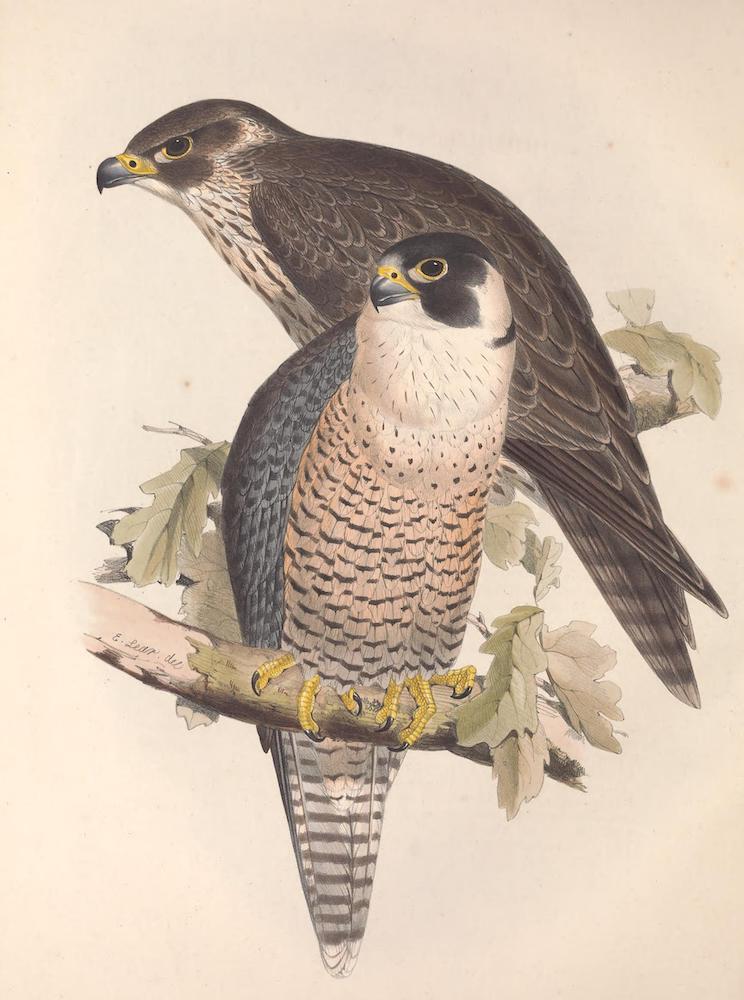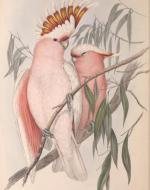Created by Rose O'Gara on Wed, 04/08/2020 - 23:08
Description:
During the Victorian age, the rise of naturalist illustration coincided with a burgeoning interest in the scientific world both within and outside of London. Charles Darwin’s On the Origin of Species (1859) inspired scientists to examine and catalogue the world’s animals. With Victorian women’s fashion owing much to the millinery, or hat-making, trade, the birds whose feathers adorned those hats also came under inspection. Ornithologists such as John Gould, Francis Morris, and Henry Dresser published in-depth, encyclopedic volumes on avian species in London and abroad. Naturalist artists such as Elizabeth Gould, Edward Lear, and H. C. Richter helped authors illustrate the bird species with newfound attention to detail and anatomic accuracy. The increasing interest in birds eventually led to the establishment of the Audubon Society in 1905, whose mission it was to preserve and protect birds and their ecosystems.
Edward Lear, “Falco Peregrinus,” for John Gould’s The Birds of Europe, 1837. The Victorian Web, scanned by Jacqueline Banerjee. In the first plate, Lear demonstrates the naturalist skill and attention to detail that brought Gould’s ornithology entries to life with stunning color and depth. The creation of this encyclopedia of bird species reflects the Victorian period’s growing interest in cataloguing and preserving animals, though feathers were extremely popular as hat accessories.
John Gould and Henry Constantine Richter, “Cacatua Leadbeteri,” 1848. The Victorian Web, scanned by Jacqueline Banerjee. Before her death in 1840, Gould’s wife, Elizabeth, often helped him sketch the birds—the partnership with Edward Lear had been short-termed due to personal incompatibility. Zoological illustrator H. C. Richter took over for Elizabeth shortly after her premature death, honoring her meticulous attention to detail and color, while Gould primarily wrote the encyclopedia’s descriptions. For example, Gould writes of the pictured Cockatoo: “It must be admitted that this species is at once the most beautiful and elegant of the genus yet discovered.”
Harrison Weir, “Birds from the Crystal Palace Show,” from The Illustrated London News, 1858. The Victorian Web, scanned by Simon Cooke. Published a year before Charles Darwin’s revolutionary Origin of Species (1859), Weir’s pictured wood engraving depicts a range of both domestic and exotic species. Though drawn in a realistic style, these birds would naturally have been in different cages at the Crystal Palace exhibition itself. A potential reason for this suspension of realism is Weir’s ability to suggest various behaviors: the parrots and parakeets appear to socialize with one another, while the more domestic birds perch above and among them, often in pairs. In the post-Darwinian Victorian world, “survival of the fittest” would ostensibly preclude this beautiful, but unrealistic, depiction.
Thomas Robert Macquoid, title page for M. Betham Edwards’s Little Bird Red and Little Bird Blue, 1861. The Victorian Web, scanned by Simon Cooke. The final plate is the title page of a children’s book which, aptly, celebrates nature. Color printing emphasizes the beauty of the delicate floral border and centered pair of birds. Though not as scientifically exact as Lear’s illustrations, Macquoid's title-page provides a more general illustration of what appear to be finches.





